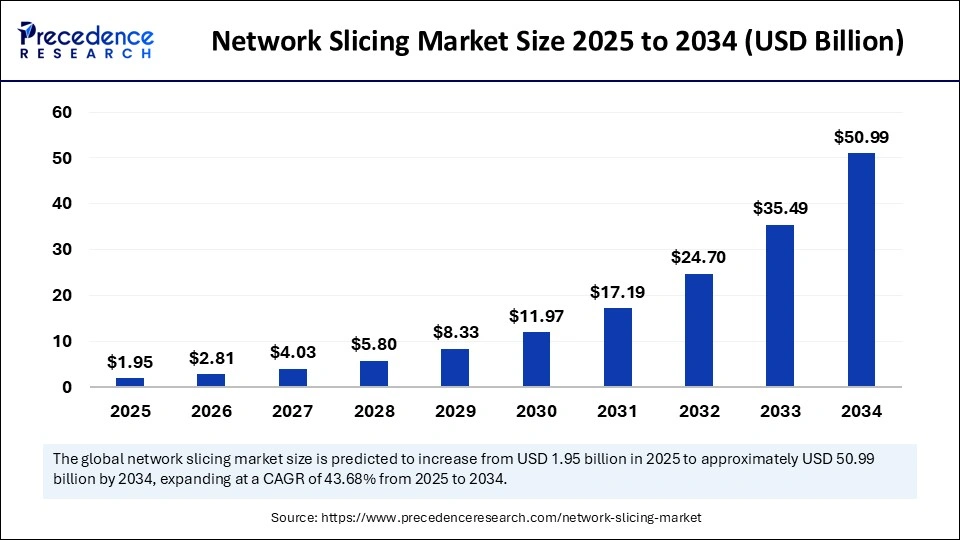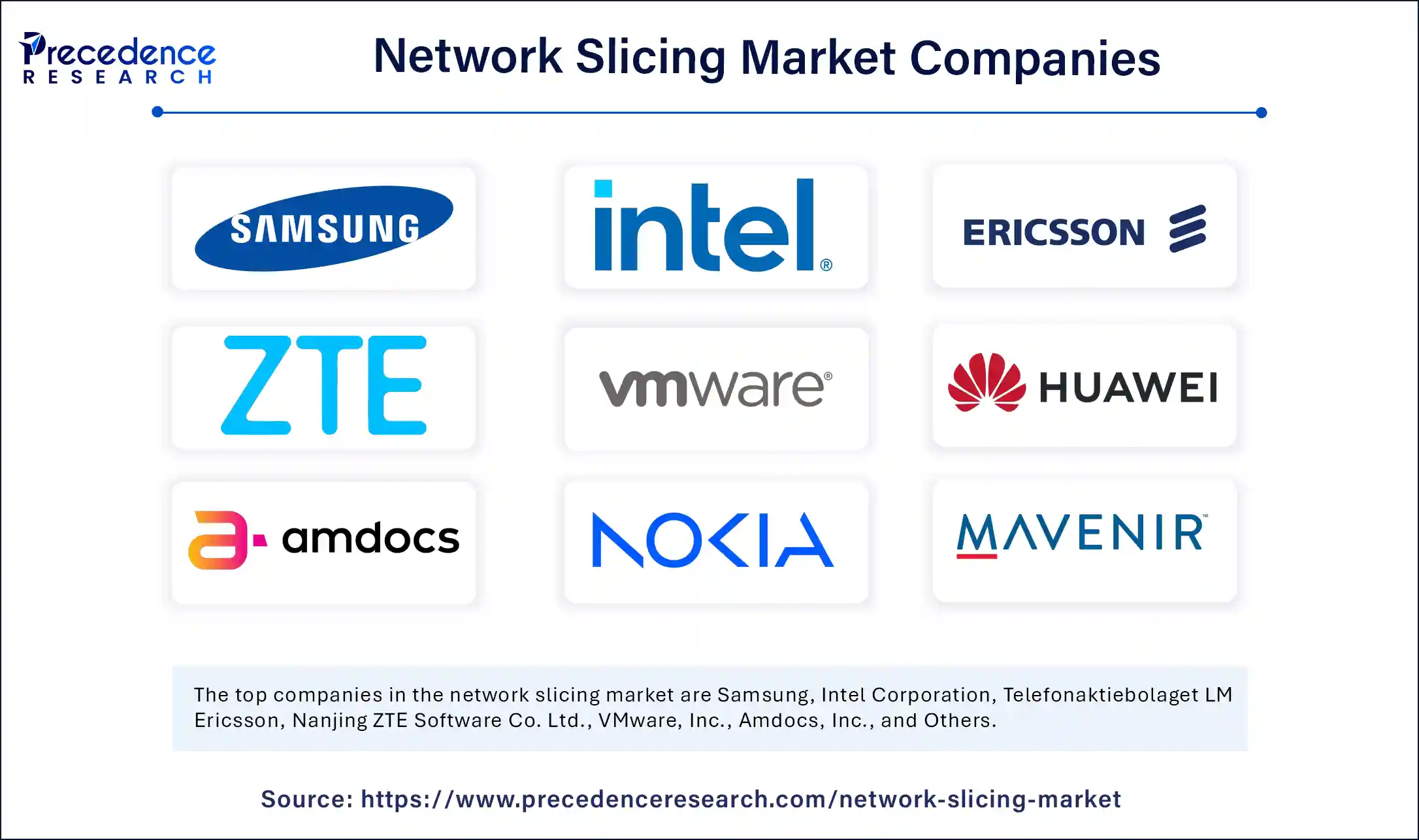What Is the Role of AI in the Network Slicing Market?
Artificial Intelligence (AI) is crucial in the Network Slicing market by enabling dynamic, automated management and optimization of network slices. AI algorithms analyze real-time network conditions and user demands to allocate resources efficiently across multiple virtual networks running on the same physical infrastructure. This ensures that each slice meets specific performance, latency, and security requirements tailored for different applications like IoT, autonomous vehicles, or mobile broadband.
Additionally, AI enhances the scalability and flexibility of network slicing by predicting traffic patterns and adjusting slices proactively to maintain optimal performance. It also plays a vital role in fault detection and self-healing, minimizing service disruptions. By automating complex network operations, AI helps telecom providers deliver customized, high-quality connectivity, driving innovation and growth in the network slicing market.
Get the Sample Copy of Report@ https://www.precedenceresearch.com/sample/6150
Market Overview: Enabling Customized Connectivity in 5G and Beyond
Network slicing is an innovative technology that enables the partitioning of a single physical network infrastructure into multiple virtual networks, each tailored to meet specific requirements of different applications, services, or user groups. Primarily associated with 5G networks, network slicing allows operators to create end-to-end logical networks with unique characteristics such as bandwidth, latency, security, and reliability. This customization facilitates optimized resource allocation and supports a wide range of use cases—from enhanced mobile broadband to ultra-reliable low-latency communications and massive IoT deployments.
As industries and consumers increasingly demand flexible, scalable, and high-performance network services, the network slicing market has gained significant momentum. The market growth is propelled by the ongoing global rollout of 5G, the rise of cloud-native network architectures, and growing adoption of digital transformation initiatives across verticals like manufacturing, healthcare, automotive, and entertainment.
Growth Factors: 5G Deployment and Industry Digitalization
The rapid deployment of 5G networks worldwide serves as the primary catalyst for the network slicing market’s expansion. 5G’s architecture was designed with slicing as a fundamental feature, enabling mobile network operators to monetize network infrastructure by delivering differentiated services with guaranteed Quality of Service (QoS). Moreover, the increasing push for digital transformation in industries such as manufacturing, energy, and transportation demands highly customizable and secure connectivity solutions, which network slicing can effectively provide.
The proliferation of connected devices, IoT ecosystems, and mission-critical applications also drives demand for flexible network partitioning. Additionally, advancements in network virtualization technologies like NFV (Network Functions Virtualization) and SDN (Software-Defined Networking) are essential enablers of network slicing, allowing dynamic and programmable network management, which further fuels market growth.
Market Scope
| Report Coverage |
Details |
| Market Size by 2034 |
USD 50.99 Billion |
| Market Size in 2025 |
USD 1.95 Billion |
| Market Size in 2024 |
USD 1.36 Billion |
| Market Growth Rate from 2025 to 2034 |
CAGR of 43.68% |
| Dominating Region |
North America |
| Fastest Growing Region |
Asia Pacific |
| Base Year |
2024 |
| Forecast Period |
2025 to 2034 |
| Segments Covered |
Enterprise Size, End-user, and Region |
| Regions Covered |
North America, Europe, Asia-Pacific, Latin America, and Middle East & Africa |
Market Dynamics
Key Market Drivers: Customization, Efficiency, and Revenue Opportunities
One of the foremost drivers for network slicing adoption is the ability to deliver tailored network experiences that align with diverse service requirements. Operators can create multiple isolated slices on the same physical infrastructure to serve use cases ranging from high-bandwidth streaming to ultra-low-latency industrial automation. This customization improves network efficiency by optimizing resource utilization and reducing operational costs.
Furthermore, network slicing opens new revenue streams for telecom providers by enabling the offering of slice-as-a-service to enterprise customers seeking private and secure network environments. The growing demand for edge computing and the need to process data closer to end users also incentivize the deployment of network slicing to support low-latency and localized services. As enterprises seek greater control over network parameters, the market sees heightened interest in slice management and orchestration platforms, driving further innovation and investment.
Opportunities: Vertical-Specific Solutions and Integration with Emerging Technologies
The network slicing market presents significant opportunities, particularly in delivering vertical-specific solutions tailored to the unique needs of industries such as automotive (connected and autonomous vehicles), healthcare (remote surgery and telemedicine), manufacturing (Industry 4.0 and smart factories), and media (AR/VR content delivery). These industries require guaranteed network performance, security, and reliability that network slicing can provide. Another opportunity lies in integrating network slicing with emerging technologies such as Artificial Intelligence (AI) and Machine Learning (ML) for automated slice management, predictive analytics, and enhanced security.
The rising interest in private 5G networks, especially for large enterprises and campuses, creates further demand for customized network slices. Additionally, growing partnerships between telecom operators, cloud service providers, and system integrators are fostering ecosystem development, helping accelerate deployment and commercialization of network slicing solutions globally.
Challenges: Complexity, Standardization, and Security Concerns
Despite its promising potential, the network slicing market faces several challenges. The technical complexity involved in designing, deploying, and managing multiple isolated slices on a shared physical network can be significant, requiring sophisticated orchestration tools and expertise. Standardization across different vendors and network components remains a work in progress, with fragmented frameworks sometimes hindering interoperability and large-scale adoption. Security is another critical concern; while network slicing can enhance security through isolation, managing security policies consistently across slices and protecting against cross-slice attacks demands advanced mechanisms and continuous monitoring.
Furthermore, integrating legacy network infrastructure with slicing-enabled 5G systems can pose compatibility challenges. Cost concerns related to initial infrastructure upgrades and the need for skilled personnel to operate slicing technologies may also slow market penetration, particularly in emerging regions.
Regional Outlook: North America and Asia-Pacific Lead Adoption, Europe Expands

North America is a leading market for network slicing, driven by early 5G adoption, presence of major telecom operators, and significant investments in digital infrastructure and edge computing. The U.S. in particular benefits from strong collaborations between carriers, technology vendors, and enterprises seeking to deploy private 5G and customized network services. Asia-Pacific is projected to witness the fastest growth in the network slicing market due to rapid 5G rollouts in countries like China, Japan, South Korea, and India. The region’s growing industrial base, focus on smart manufacturing, and government support for digital initiatives fuel slicing adoption.
Europe holds a significant share as well, supported by regulatory frameworks encouraging 5G innovation and the presence of key technology providers. Countries such as Germany, the UK, and France are actively piloting and deploying network slicing in sectors like automotive and healthcare. Latin America and the Middle East & Africa are emerging markets with growing interest, but slower 5G deployments and infrastructure challenges limit immediate expansion.
Network Slicing Market Companies
- Samsung
- Intel Corporation
- Telefonaktiebolaget LM Ericsson
- Nanjing ZTE Software Co. Ltd.
- VMware, Inc.
- Huawei Technologies
- Amdocs, Inc.
- Nokia Corporation
- Mavenir Systems, Inc.
- Affirmed Networks
- Tambora Systems Ltd.
Segment Covered in the Report
By Enterprise Size
- Large Enterprises
- Small & Medium Enterprises
By End-user
- Healthcare
- Government
- Transportation & Logistics
- Energy & Utilities
- Manufacturing
- Media & Entertainment
- Financial Services
- Others (Retail, Agriculture, IT & Telecommunication)
By Region
- North America
- Europe
- Asia Pacific
- Latin America
- Middle East & Africa
Read More: LAN as a Service Market
Source: https://www.precedenceresearch.com/network-slicing-market


